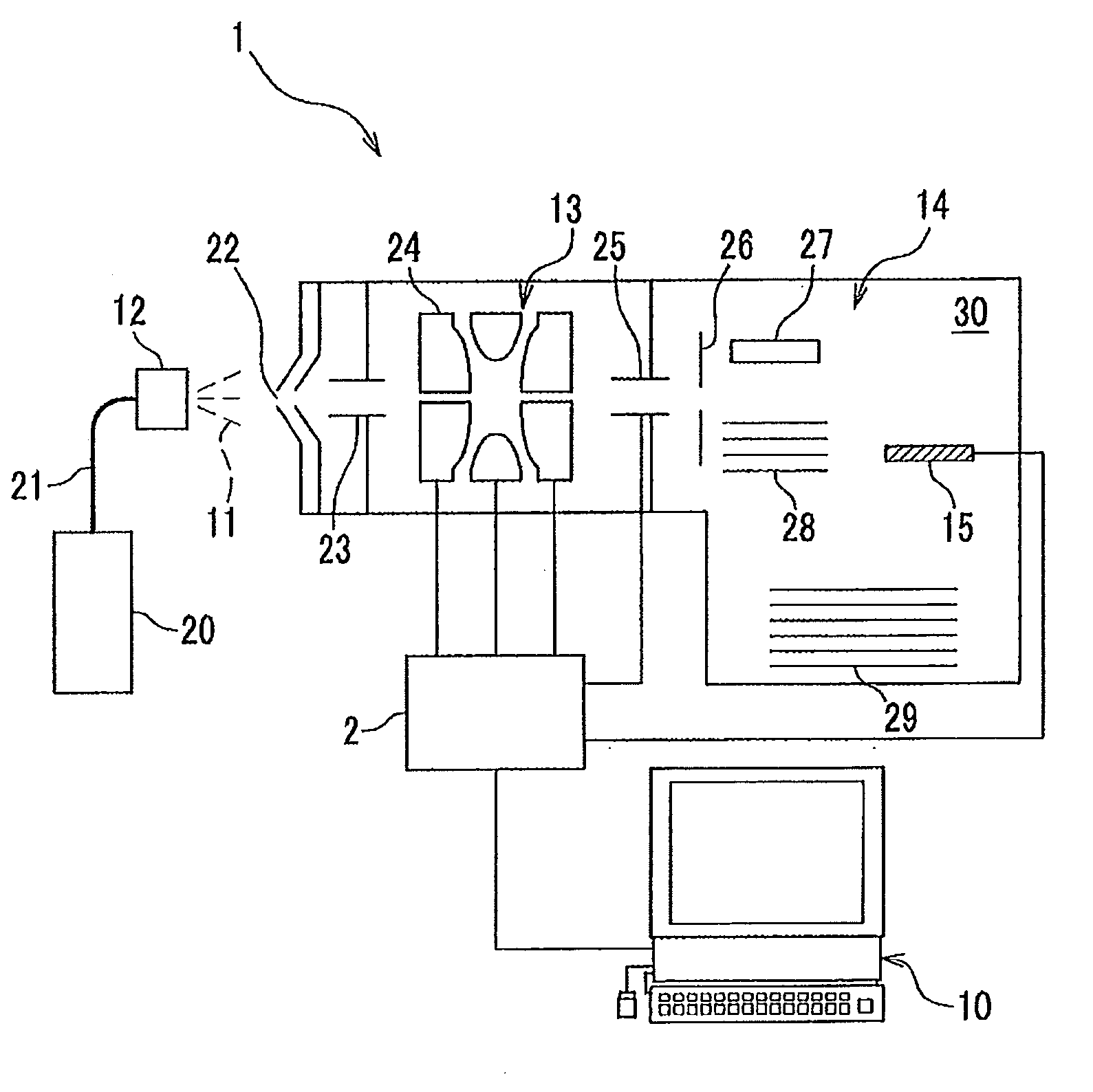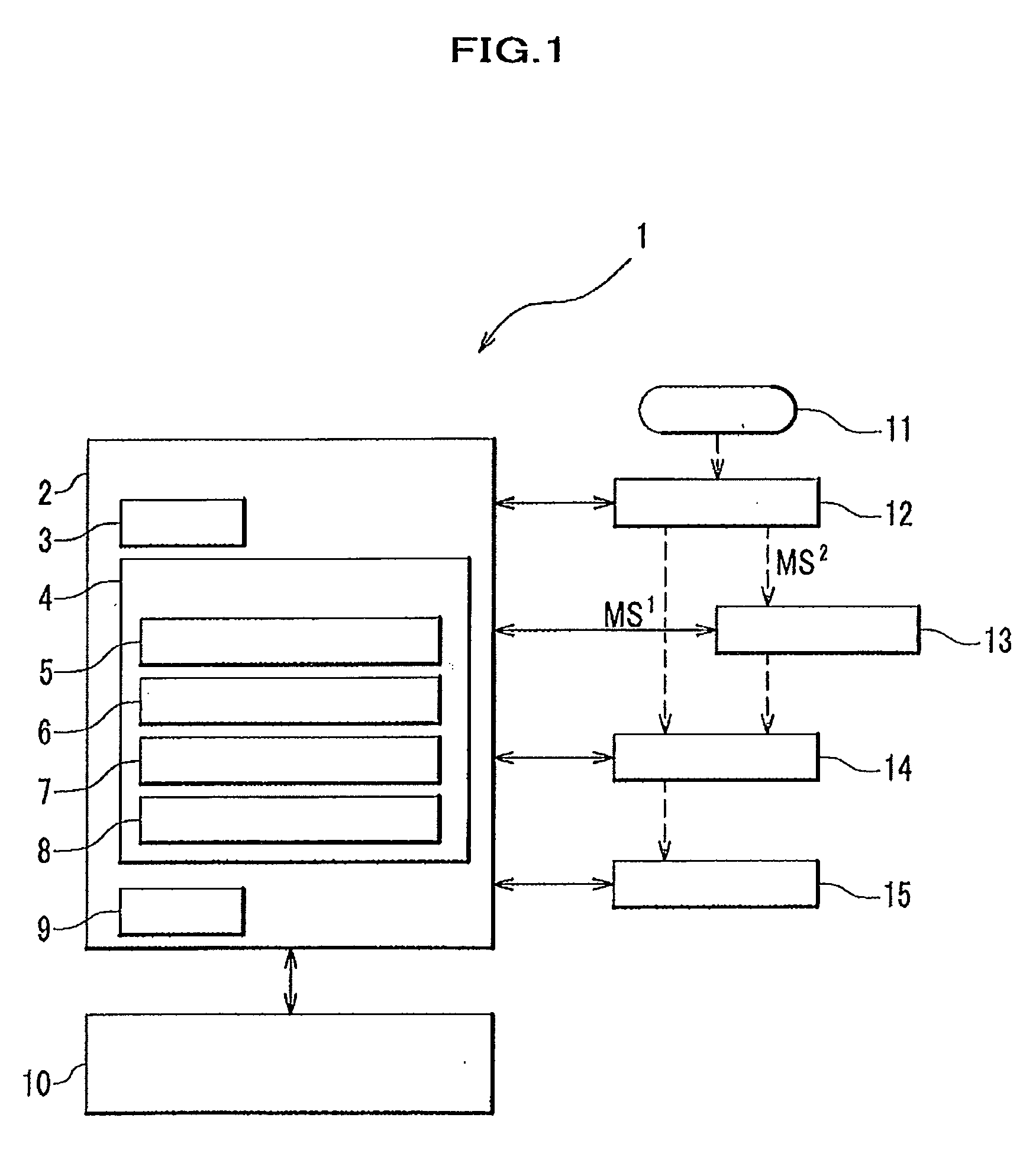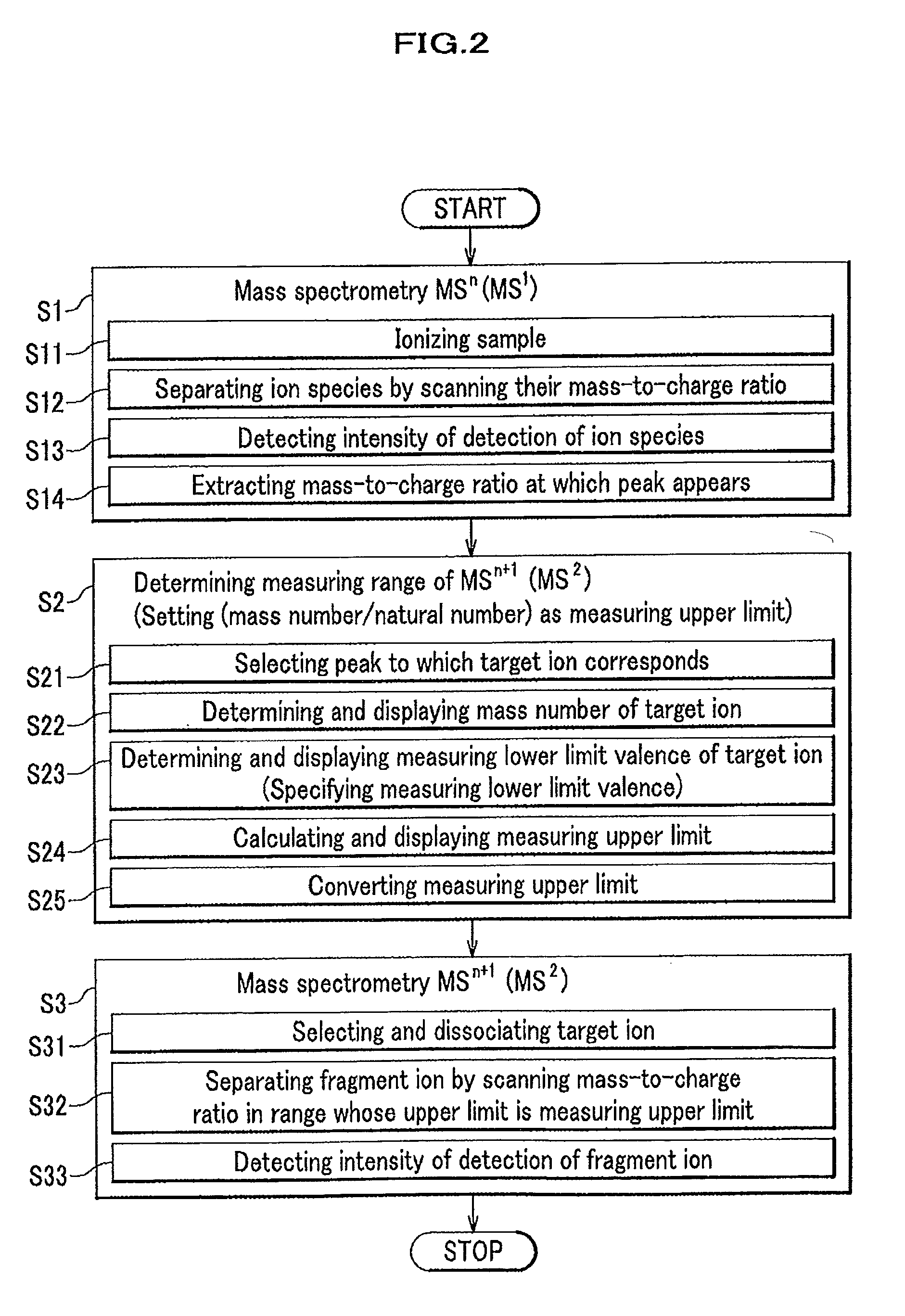Mass spectrometer, method of mass spectrometry and program for mass spectrometry
a mass spectrometer and mass spectrometer technology, applied in mass spectrometers, separation processes, dispersed particle separation, etc., can solve the problems of long time required for mass spectrometry, long total scanning time, and out of range target ion peak of fragment ion
- Summary
- Abstract
- Description
- Claims
- Application Information
AI Technical Summary
Problems solved by technology
Method used
Image
Examples
first embodiment
[0051]FIG. 7 is a block diagram of an ion trap and time-of-flight type mass spectrometer 1 according to a first embodiment of the present invention. In the mass spectrometer 1 shown in FIG. 7, a dissociation chamber 13 includes an ion trap unit 24, and a time-of-flight type mass spectrometer 30 includes a mass separator 14 and a detector 15.
[0052]A sample 11 flows into a pipe 21 from a sample inlet 20, and arrives at an ionization chamber (ion source) 12 through the pipe 21. The sample 11 is ionized in the ionization chamber 12 using ESI (Electron Spray Ionization) etc. to produce a plurality of ion species. The ionized sample 11 (ion species) is absorbed in a sampling unit 22 by voltage applied thereto, passes through the sampling unit 22, and arrives at an ion transport unit 23. The ion species are moved by voltage applied to the ion transport unit 23, and arrive at the ion trap unit 24 in the dissociation chamber 13.
[0053]In MS1, the ion species pass through the ion trap unit 24 ...
second embodiment
[0059]FIG. 8 is a block diagram of a quadrupole and time-of-flight type mass spectrometer 1 according to a second embodiment of the present invention. The difference between the mass spectrometer 1 according to the second embodiment and the mass spectrometer 1 according to the first embodiment is that the dissociation chamber 13 is provided with a linear ion trap 33 instead of the ion trap unit 24. The linear ion trap 33 includes an entrance electrode 34, a quadrupole filter (quadrupole) 31, and an exit electrode 32.
[0060]The ion species produced by ionizing the sample 11 are confined within the quadrupole filter 31 using voltage applied by the entrance electrode 34 and the exit electrode 32. The quadrupole filter 31 can select a target ion from the ion species by trapping only the target ion from the confined ion species. And, the target ion selected in the quadrupole filter 31 is dissociated by CID reaction to produce a fragment ion. This fragment ion is moved to the time-of-fligh...
third embodiment
[0061]FIG. 9 is a block diagram of a quadrupole and time-of-flight type mass spectrometer 1 according to a third embodiment of the present invention, and an ECD (Electron Capture Dissociation) reactor 45 included in the mass spectrometer 1. The difference between the mass spectrometer 1 according to the third embodiment and the mass spectrometer 1 according to the second embodiment is that the dissociation chamber 13 further includes ion gyrating electrodes 46 and the ECD reactor 45 between the linear ion trap 33 and the time-of-flight type mass spectrometer 30 in addition to the linear ion trap 33. The ECD reactor 45 includes an ECD reactor sample inlet electrode 40, an ECD reactor quadrupole electrode 41, an ECD reactor latch electrode 42, an ECD reactor electronic inflow electrode 43, and a filament 44.
[0062]The target ion is emitted from the linear ion trap 33, and is moved to the ECD reactor 45 via the quadrupole filter 35, the ion gyrating electrode 46, and a quadrupole filter...
PUM
 Login to view more
Login to view more Abstract
Description
Claims
Application Information
 Login to view more
Login to view more - R&D Engineer
- R&D Manager
- IP Professional
- Industry Leading Data Capabilities
- Powerful AI technology
- Patent DNA Extraction
Browse by: Latest US Patents, China's latest patents, Technical Efficacy Thesaurus, Application Domain, Technology Topic.
© 2024 PatSnap. All rights reserved.Legal|Privacy policy|Modern Slavery Act Transparency Statement|Sitemap



